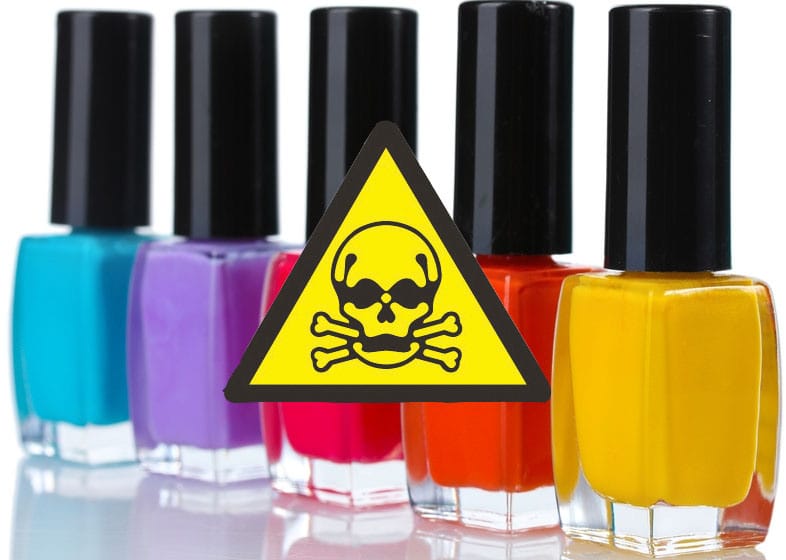Women should be more aware with regards to the ingredients in the nail polish they are using. There are confusing chemical names present on the ingredient list of your favorite nail polish, therefore it is important to know which chemicals may actually be dangerous.
Below are the 5 ingredients you should watch out for in your nail polishes:
1. Toluene
Toluene is used to give the nail polish a smooth and even finish. It is also made from coal tar and petroleum. Chronic exposure have been linked to problems affecting the nervous system, lowered blood cell count, anemia, liver and kidney damage and may also affect a developing fetus.
Toluene has been banned by the European Union, but not by the United States.
2. Formaldehyde
Used in nail polish as a preservative and hardener. It is a chemical component in particleboard, plywood and is often used as a sterilizer, preservative and embalmer. Formaldehyde is considered as a carcinogen, that is linked to lung and nasal cancers by the International Agency for Research on Cancer.
3. Dibutyl Phthalate/DBP
Dibutyl Phthalate are used in nail polish to make it more flexible and less prone to chips and cracks. DBP has been linked to reproductive problems and issues.
This has been banned in Europe but is still approved for use in the in the United States. But women should choose to avoid it.
4. Camphor
Camphor is a scented substance, derived from the wood of the camphor tree. Its effects are it can cause dizziness, nausea and headaches when inhaled, more specifically in large doses, making it a concern for consumers and nail technicians.
5. Formaldehyde Resin
Though formaldehyde resin hasn’t been linked to cancer, like the regular formaldehyde, it has been known as a skin allergen causing dermatitis. It may also contain residual levels of formaldehyde.
People who work in the nail salons and are often exposed to these chemicals on a regular basis are most at risk from these negative effects. To reduce your risks, choose a well-ventilated area when you are visiting the nail salons and when doing your nails at home.
Most importantly, check the label of the nail polishes you are using. Though this may not be a foolproof method because some of the “non-toxic” labels on the nail polishes are not accurate.
